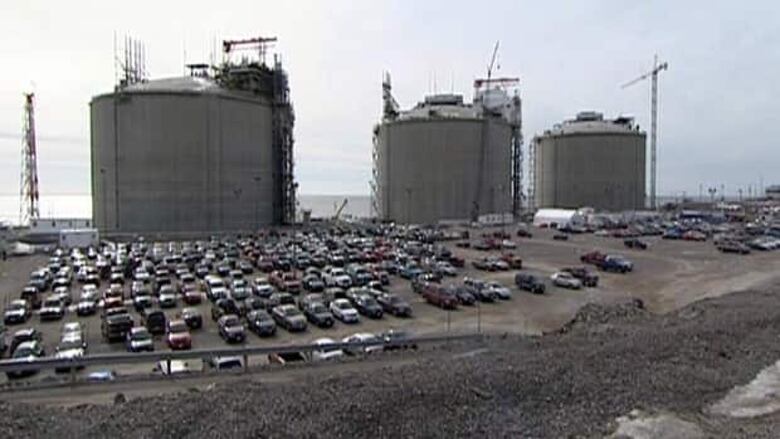Canaport LNG terminal bucks trend
Increased output won't continue, experts say

Low prices for natural gas have all but idled most of the liquefied natural gas terminals across North America.
But Saint John's Canaport LNG, which regassifies liquefied natural gas and then sells it, actually increased its output last year.
Still, the plant, owned by Repsol and Irving Oil Ltd., is only operating at about 30 per cent of its capacity, according to the National Energy Board.
Although that's better than most LNG plants in North America, some of which are operating at about five per cent capacity, industry analyst Barbara Shook predicts even that won't last.
"The only reason its got that much is because the Qataris are dumping at least one cargo a month through there," said Shook, of the Energy Intelligence Group, based in Houston, Texas.
Repsol, which owns 75 per cent of the Canaport LNG terminal, has a multi-year contract with Qatargas, she said.

By comparison, Canaport's capacity is about 1.2 billion cubic feet per day.
It's unclear what other import contracts Repsol has for Canaport, which began operating in 2009.
Mary Usovicz, the vice president of external affairs for Repsol Energy North America, refused to comment on Canaport's performance last year or its 2012 outlook.
In 2009, Denis Marcoux, the vice-president of Repsol Canada, said despite the troubling economic climate worldwide, he expected the $750-million terminal in Saint John to be a key player in Canada's energy sector.
Shale gas causes price drop
Shook contends the entire LNG industry in North America is in a deep slump.
As of Thursday, the spot price for natural gas in North America was $2.96 per million British thermal units, while the world price was about $16.50.
'No one dreamed that this shale revolution, the shale gale would just blow through the continent like it has.' —Barbara Shook, industry analyst
"It just turned out to be the wrong idea at the wrong time," said Shook.
"What happened was the LNG tsunami that was supposed to hit the U.S. east coat ran into something called a shale wall.
"No one anticipated the development of the technology that would allow North American producers to exploit a resource they knew was there but up until that point were unable to exploit because they didn't have the technological resources to do so," she said.
"No one dreamed that this shale revolution, the shale gale would just blow through the continent like it has."
In fact, Shook said in the 40 years she's been in the industry, there has always been a concern about a shortage of natural gas.
"Now I don't hear anyone expressing concern. Now we're looking at exporting from North America."
That's why three export terminals are being built in B.C., and as many as four U.S. import terminals are being converted into export terminals, or to have duo capacity, said Shook.

Still, the National Energy Board estimates the plant brought in about 30 per cent more gas in 2011 than it did in 2010 – 107 billion cubic feet, compared to 74 bcf.
Edward Kallio, the director of gas consulting for the Ziff Energy Group in Calgary, said Repsol is storing the gas and then playing the spot market.
"They send out into peaking markets in the U.S. northeast when we have cold weather," he said.
"They earn quite a sizeable return by doing that."
But Kallio doubts that will continue, given the growing supply in the U.S. "And you’ve got more flowing pipeline gas, therefore you need less peaking gas when you get a cold snap," he said.
"There's less and less winter differential to play with going forward here."
Repsol is responsible for providing all of the liquefied natural gas at Canaport and holding the capacity of the terminal. Irving Oil handles marketing the regassified liquefied natural gas in Atlantic Canada, while Repsol markets it elsewhere in Canada and in the United States.